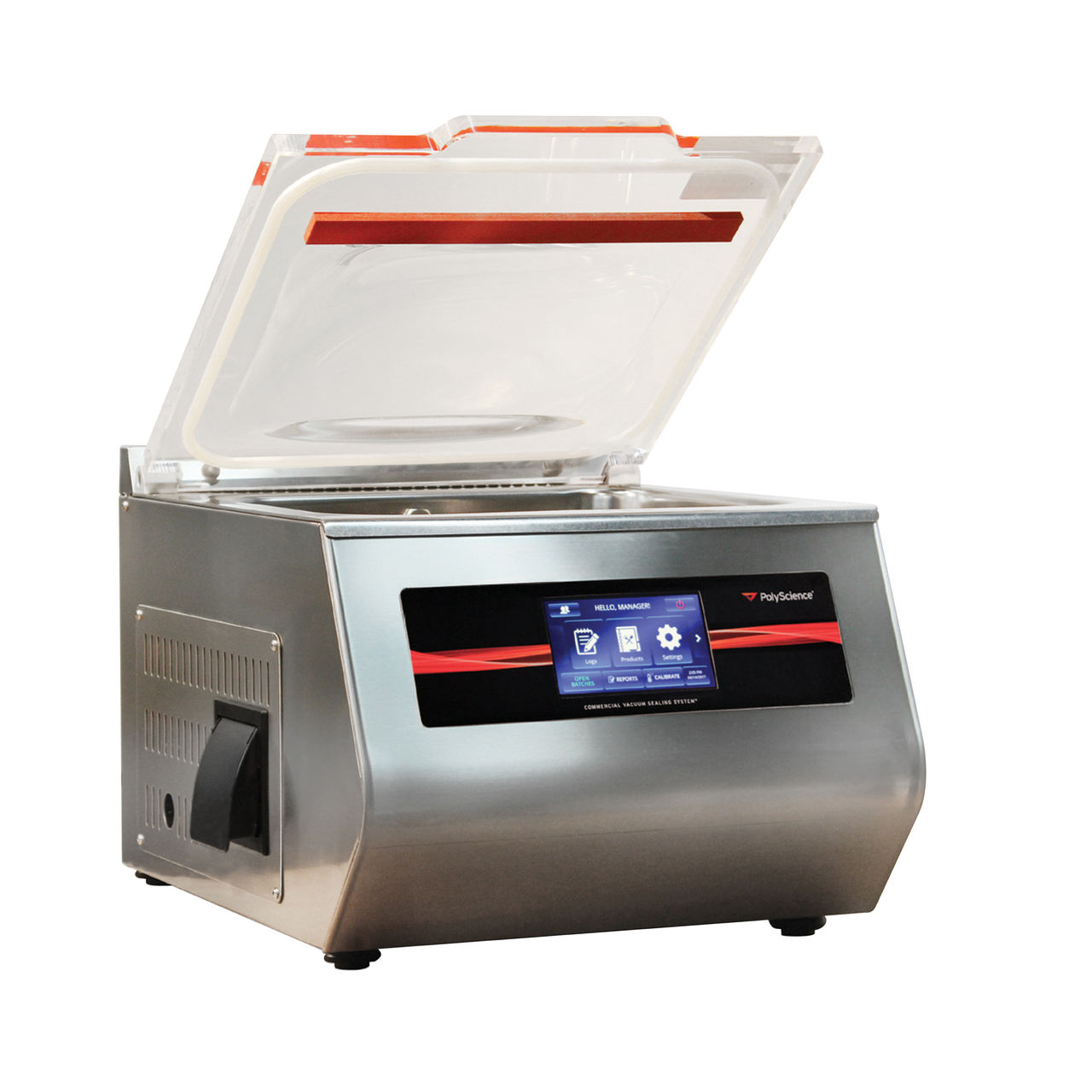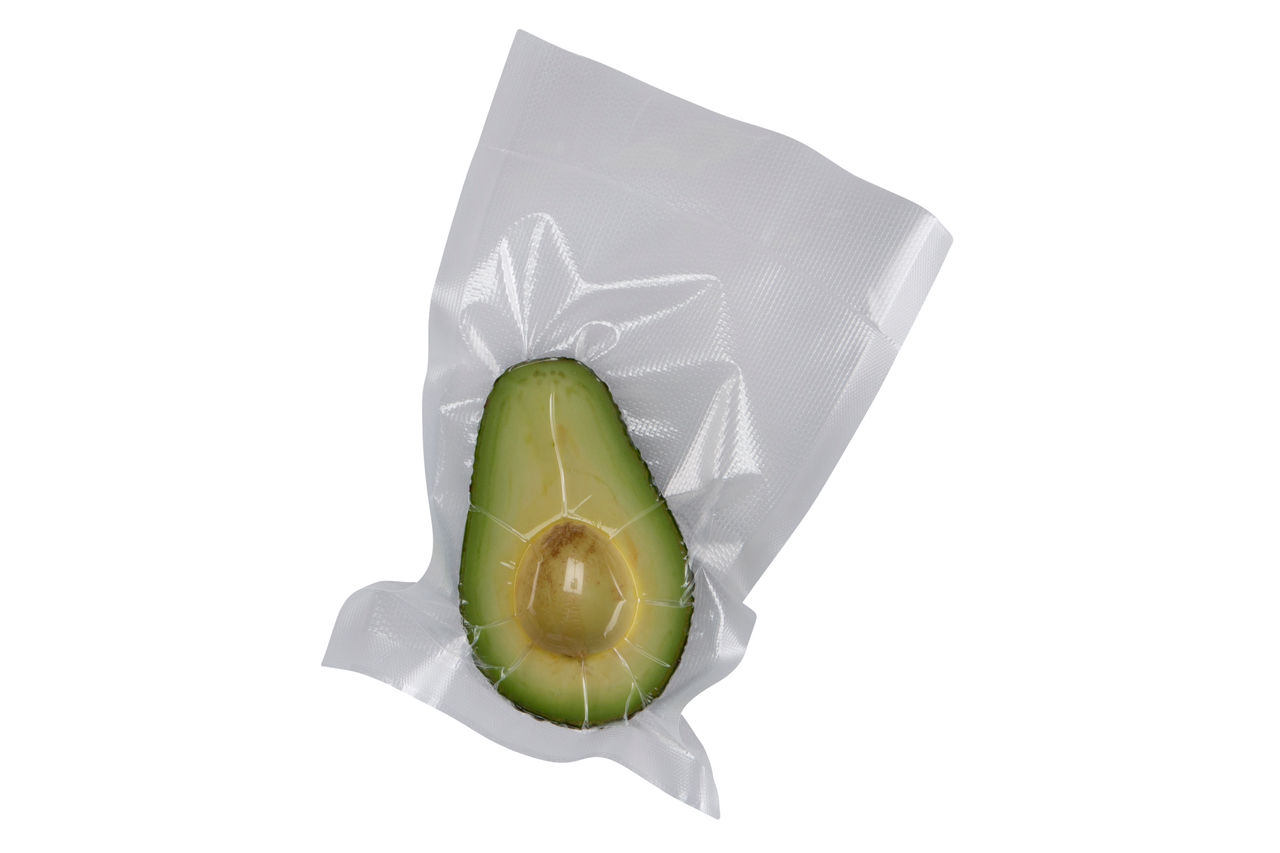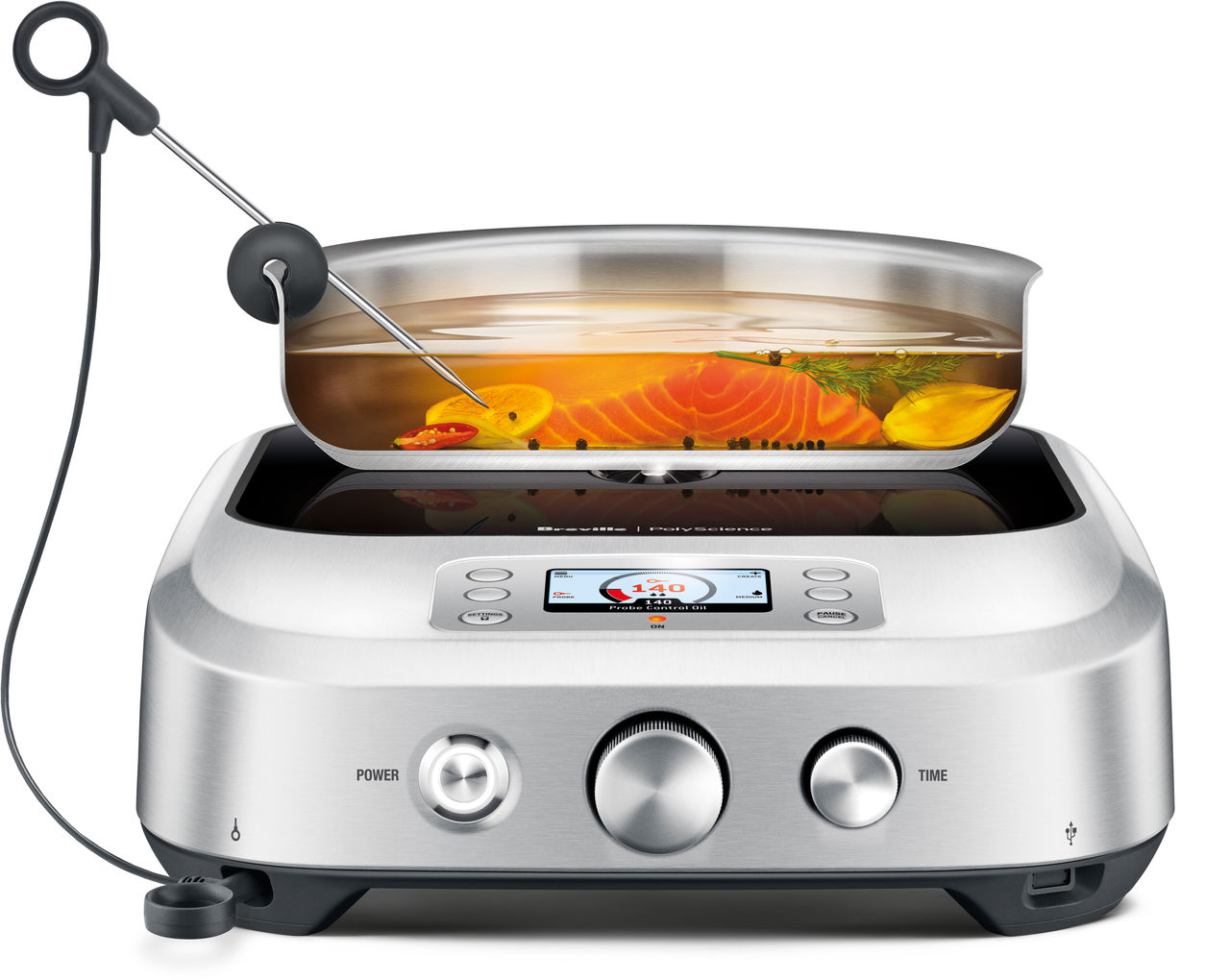
Everything You Need To Know About Vacuum Sealing
Sous Vide literally translates to “Under Vacuum”. However, the technique is as much about cooking under vacuum as it is low temperature cooking. You may also see vacuum sealing as a process referred to as “Reduced Oxygen Packaging or ROP” -or- “Modified Atmosphere Packaging or MAP”. Although not everyone uses reduced oxygen for low temperature cooking, there are numerous reasons why vacuum packaging is ideal.
• Vacuum sealed pouches conform tightly to the shape of the product in the bag which provides optimal heat transfer.
• Chamber vacuum sealers are capable of packing food efficiently and consistently.
• Vacuum bags are water-tight which makes chilling of packaged and cooked foods easy.
• Vacuum bags containing liquids can be frozen flat to optimize storage space and makes monitoring inventory much easier than when working with randomly shaped items.
• If food has been cooked and pasteurized sous vide, this greatly extends shelf life as the pouches are not oxygen permeable, maintaining a reduced-bacteria environment.
• By cooking in a sealed environment, nutrients are not lost to the cooking medium. This also means that volatile aromas and flavors are preserved.

Vacuum pouches often get a bad rap. The two main reasons for this is the safety of cooking in plastic and the environmental impact of using sous vide bags. Let’s address both of these concerns..
While legitimate concerns exist in reference to plastics being exposed to high temperatures, current knowledge amongst the scientific community supports that high and low-density polyethylene and polypropylene are the safest plastics for use with food. Most of the time, ROP bags are made of multi-layers of Polyamide and Polyethylene. Many common vacuum bags rated as “boil-able” are made of a blend of these plastics. These bags are also commonly lined with polyethylene.
There’s no question that cooking sous vide consumes plastics and has an environmental impact. Please understand that we always have our eyes and ears open to environmentally sustainable packaging options. When we find something that works, we will work tirelessly to test its viability. Without taking this concern lightly, we urge you to examine your approach to cooking overall and look for ways to conserve in other areas… Do you pat your vegetable dry on two C-fold paper towels instead of one? Do you “cater wrap” less-often used items and appliances for storage? Do you use single-use plastic tasting spoons?
If you note that you’re making a large environmental impact in one area, try to search for other areas where you can cut back. Don’t forget that often, several portions of product can be cooked in one large pouch rather than individual portions.
Ready to vacuum seal? Let’s review some best practices when using a chamber vacuum sealer.
• Properly maintain your vacuum sealer - Consult your manufacturer for in-depth information on this topic. In our experience, many issues related to faulty vacuum sealers stem from a lack of maintenance. Routinely monitor and change the vacuum oil and filter as needed. Continuously monitor other wear and tear items like seal bar tape and wires or the lid channel gasket.
• Keep it cool - Only vacuum seal product if the internal core temperature is at or below 41ºF. The reason for this is that as the pressure in the vacuum chamber approaches zero millibar, the boiling point becomes lower. Liquids in the bag will begin to boil as this happens. This means that the water content inside of your food will also begin to boil. With products such as tomato sauce, this action may not necessarily be detrimental to the food product but may create a mess. On the other hand, the cellular membrane of products such as fish filets, steaks, or other cuts of animal proteins will rupture and lose their ability to retain moisture as the food cooks. This will result in dry food with an unpleasant texture. For more information on this topic, check out our video about it HERE.
• Make a bone guard - Bone guards are available for purchase from a number of manufacturers and are a great option if you vacuum seal many sharp or bone-in products. If you find yourself vacuum sealing an occasional lamb rack, try cutting extra strips of vacuum bag to cover the bone when vacuum sealing. Bones or shells can be sharp and poke through the bag causing a leak. Protect your investment.
• Avoid over-filling - When vacuum sealing products, whether steaks or oblique carrots, take care that the product lies in a single, even layer. This will ensure that product cooks evenly. You may package several chicken breasts in a single pouch, but lie them flat - do not stack. Overfilling pouches with liquid or not using a liquid tray when sealing may cause pouches to spill. This could result in moisture leaking into the internal components leading to costly repairs.
• Be mindful of obstructions at the seal bar - When filling a vacuum bag with seasoning, take care not to obstruct the seal area with salt or the spice granules. Most vacuum sealers will push marinades out of the way when sealing, but solids such as spices will obstruct the seal, possibly causing the bag to leak.
• Do not fold the vacuum bag over - Vacuum bags may vary in thickness, and material makeup. Folding a pouch over to keep the seal area clean may cause micro-fissures in the pouch resulting in a leak. Some bags are more resistant to this than others, but as a best practice do not fold the bag.
• Make some room - Aromatics such as citrus peel, whole garlic, and herbs can leave an imprint on the food you’re cooking. Either use enough oil in your bag to give these aromatics a place to move freely without touching the food -or- make a potent, aromatic oil that is infused with flavor.

Have you decided that you cannot adopt sous vide cooking because of the use of plastics? Consider the Control ºFreak - the world’s most precise induction cooktop. The use of Probe Control™ and Probe Control Oil™ make it possible to cook foods in a pot to a single degree without the need for packaging the food as part of the cooking process.
This post has been a collaboration between Breville | PolyScience and the team at CREA. For more information regarding sous vide cooking and vacuum sealing technique, please visit their selection of courses HERE. CREA is the research academy, founded by Dr. Bruno Goussault whom is widely accredited as the founder of sous vide cooking. Dr. Goussault was honored by the prestigious Einstein Legacy Project as one of the world’s 100 greatest innovators of the century for his pioneering work in this field. Sous vide cooking is a specialized process that requires an approved HACCP Plan or variance for the USA. CREA is your go-to resource to help build those plans.

